Amiga
Top 10 Best Commodore Amiga Games of All-Time!
Before the Amiga line of computers was released, the Amiga Corporation was being courted by both Atari and Commodore to design a next generation chipset. Commodore ended up buying Amiga outright, and the Amiga line was released as a competitor to the newly-released Atari ST. The Amiga was one of the world’s first multimedia computers and provided a significant upgrade from 8-bit home computers, including Commodore’s own C64. It was positioned as a less expensive alternative to the Apple Macintosh and IBM PC, but its wide range of games and creative software made the Amiga more successful as a home computer than as an all-purpose business machine. Either way, the Amiga was ahead of its time and had an active fan base years after Windows-based PCs became the de facto standard of home computers.
10
SimCity
1989
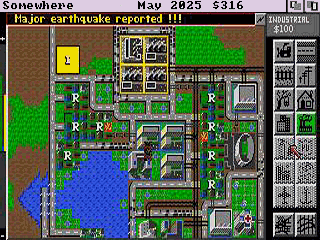
SimCity is a revolutionary strategy game that tasks players with designing their own city. You’ll need to supply power, establish a transportation system, keep the crime rate low, manage disasters, and achieve balance among your residential, commercial, and industrial properties. While SimCity is an easy-going game with no time limit and no definitive objective, there is an element of randomness that keeps the game exciting. You could spend decades growing your city only for an earthquake to bring things to a screeching halt. Likewise, nuclear meltdowns and plane crashes can cause incredible damage to your city. If nothing else, having the chance to play hero after a disaster gives you a break from collecting taxes and approving budgets. The 1989 Amiga version of SimCity was one of the earliest versions of the game, so it’s missing things like reward properties and changing seasons that were introduced in the SNES version. It’s hard to fault the game, and there was really nothing else like it in 1989. Populous allowed you to play god, but SimCity gave you the incomparable power of a government bureaucrat.
9
Monkey Island 2: LeChuck’s Revenge
1992
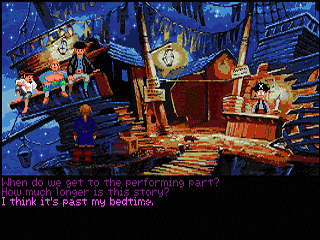
LucasArts had a knack for point-and-click graphic adventure games. In lieu of text-based gameplay, their groundbreaking “SCUMM” engine provided players with an intuitive menu-based method of interacting with the game’s environments. Six LucasArts adventure games were released for the Amiga, so it’s hard to single out just one for this list. Monkey Island 2 was the one of their last games released for the Amiga (and one of the prettiest), and it was the most refined from a gameplay standpoint too. There were fewer menu commands to worry about, the graphical inventory improved overall usability, and the various difficulty settings made the game more approachable and less frustrating. LucasArts adventure games were well known for their irreverent humor, and Monkey Island 2 is arguably the funniest game they ever developed. The Monkey Island series would carry on for many years, but Guybrush Threepwood’s adventures were never more entertaining than they were in Monkey Island 2.
8
Cannon Fodder
1993
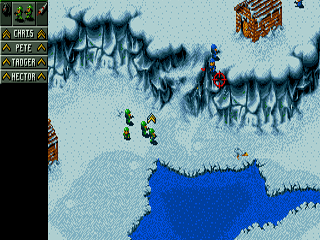
Known for its addictive gameplay and dark sense of humor, Cannon Fodder is a simple action game disguised as a strategy game. Using a simple point-and-click interface, players control a small squad of soldiers through over 70 levels. Players have to contend with enemy foot soldiers, tanks, helicopters, mines, turrets, and many other hazards. Rivers and quicksand pits can also pose a threat, so players have to be mindful of the terrain as well. Since players are often outnumbered or overpowered, a lot of strategy is required. Some levels seem nearly impossible at times, but that’s kind of the point. Cannon Fodder differs from most war-themed games by virtue of the fact that it has a blatantly anti-war message. Even the title of the game makes a statement on the futility of war. Cannon Fodder is an easy game to get into but a difficult game to win. That feels somehow appropriate given the subject matter.
7
Turrican II: The Final Fight
1991
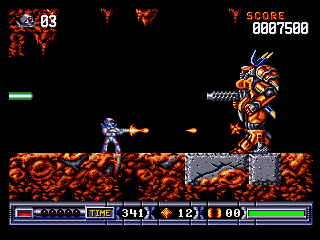
Intense side-scrolling action games seemed to elude the Amiga, but Turrican was a rare gem that proved that personal computers and action games could go hand in hand. Any good action hero needs effective tools of destruction, and Turrican has this area covered. The game’s primary weapon is a multi-purpose rifle that can be used as either a laser beam or a spread gun. Players also have access an extendible lightning whip that will circle around the player. Without question, the coolest weapon was the buzzsaw-like “Energy Wheel” that essentially felt like a weaponized version of Metroid‘s morph ball. Amiga fans with affinities for explosions and arcade-like experiences can’t do much better than Turrican… unless you count the sequel. Turrican II was longer, had more weapons, and refined the jumping mechanics. The game features five massive levels (ranging from futuristic cities to ominous underwater dungeons) and nearly 2000 screens to explore. The maze-like level structure features a healthy mix of vertical and horizontal sequences, and the boss battles are amazing. There are even a few forced-scrolling sections that essentially transform the game into a shoot ’em up temporarily. Turrican II never stopped impressing me. You will not find a better action game on the Amiga.
6
Sensible World of Soccer 96–97
1996
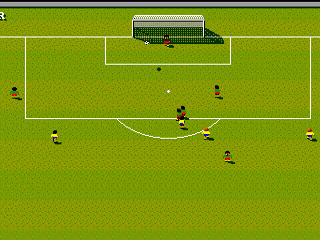
The Amiga had no shortage of football games, but none were more playable than Sensible Soccer. The game uses a zoomed-out bird’s eye view that makes it easy to tell where your teammates and opposing players are at a glance. Since there are fewer players off screen at any given moment, you are able to make smarter and faster decisions. Games where the camera is zoomed in might look better, but they’re claustrophobic in comparison and it feels very restrictive when the vast majority of the players are off-screen at any given time. Sensible Soccer doesn’t allow itself to be weighed down by ill-conceived attempts to emulate real life. The players move around the field much faster than real-life footballers can, and the game is more fun as a result. On a similar note, the aftertouch feature allows for unrealistic swerve, but this is all in the name of playability. I’ll take the simple graphics and user-friendly control scheme of Sensible Soccer over EA’s “realistic” games any day. Sensible World of Soccer 96–97 was the seventh(!) version of the game released on the Amiga and the final update. Each update offered slight gameplay adjustments, but you can’t go wrong with any of them.
5
Lemmings
1991
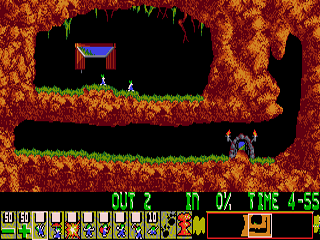
The objective in Lemmings is for players to safely guide groups of mindless Lemmings through a number of obstacles and eventually get them to a designated exit. This is easier said than done, as the lemmings have no qualms in walking off cliffs, falling into pools of lava, or wandering into dangerous traps. Fortunately, players can assign various abilities to the lemmings in order to help them avoid these hazards. Lemmings can be bestowed with the ability to dig through the ground, bash through walls, climb over barriers, or build stairways. Players can even give lemmings parasols to allow them to safely float down from high altitudes. The game requires a lot of strategy, and the 120 stages should keep players busy for many hours. Lemmings was an immediate hit in 1991 and was ported to over two dozen platforms, but the two-player split-screen mode (and the ability to use two mice at once) set the Amiga version apart from most ports.
4
Another World
1991
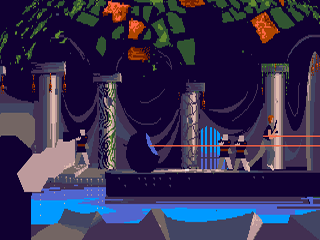
Another World is a groundbreaking “cinematic platformer” from Delphine Software that helped define an entire sub-genre. It was the precursor to Flashback, but more recent games like Ico and Shadow of the Colossus owe a lot to Another World. Another World tells the story of an experiment gone wrong, and follows the adventures of a young scientist who finds himself stranded on an alien world. There are no flagpoles marking the ends of levels, and no magical fairies to tell you where to go next. In order to succeed in the game, players have to pay close attention to their environments. You’ll swing on vines to elude giant monsters, rock back and forth to escape from hanging cages, and enlist the help of an alien buddy who speaks another language. There is very little direction given to the player, so it’s on them to figure things out for themselves. I don’t like including multiple games from the same franchise on any particular list, so it would have felt like cheating if I put both Flashback and Another World on this list. (Flashback isn’t technically a sequel, but it is a spiritual successor from the same developer and features many of the same principle game mechanics.) I’ve always preferred the minimalistic art design of Another World, but I feel like Flashback deserves a mention too.
3
Bubble Bobble
1987
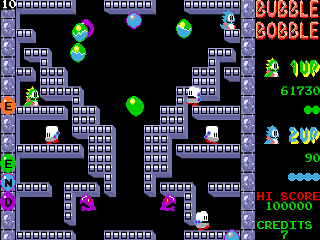
The Amiga was a powerhouse that helped usher in the 16-bit era of gaming. Bubble Bobble was an 8-bit action/platform game that didn’t require the full power of the Amiga, but it’s position on this list just goes to show that graphics aren’t everything. The gameplay in Bubble Bobble is centered around two adorable dinosaurs that blow bubbles to trap their enemies. For reasons I can’t fully comprehend, shooting enemies with bubbles is more fun than shooting enemies with bullets. Trapping someone in a bubble and popping them out of existence is actually pretty brutal when you think about it, but that’s another story altogether. The thing that made Bubble Bobble so incredible was its two-player mode. There are 200 stages to play through, so the game can start to feel a little tedious if you play by yourself. With a friend, the game becomes a lot more competitive and you’ll likely find yourself racing to defeat enemies or collect food items. A game where you get to compete against another player in a co-op environment is exactly the kind of multiplayer that I have always gravitated toward. Bubble Bobble has been released in dozens of platforms, and the Amiga port is very faithful to the arcade original. The soundtrack is especially amazing on the Amiga and is a little more bass-heavy than other ports. It almost sounds like an early Depeche Mode album!
2
Civilization
1992
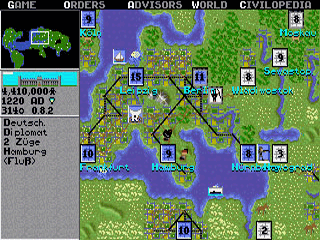
By 1991, Sid Meier already had games like Pirates! and Railroad Tycoon on his resume, but Civilization cemented him as one of the industry’s all-time greats. Civilization is a seminal turn-based strategy game in which players attempt to build an empire in the face of competition from six other civilizations. When the game begins, players are given control of one or two settler units. Through exploration, warfare, and diplomacy, the civilizations grow. Players make decisions on where new cities will be built, and settlers can also shape their terrain, mine for resources, and build roads between cities. The game begins in 4,000 B.C. and new technologies are introduced as time advances. Simple discoveries like the wheel and pottery give rise to more complex inventions like the chariot and granary buildings. By the end of the game, concepts like nuclear fission and spaceflight will be within reach. When Civilization was released, most games were still being marketed to children, so a game that challenges players to weigh the pros and cons of different political ideologies was something special. Civilization taught me that world domination is hard work, history can be fun, and Montezuma’s a grade-A asshole.
1
Worms: The Director’s Cut
1997
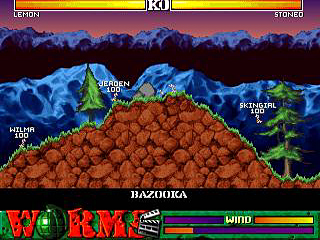
Worms could be described as a marriage between Lemmings and Cannon Fodder and does a great job of blending action and strategy elements together. It’s a decent little game when played alone. When you get a group of friends together, however, it’s instantly transformed into one of the most entertaining games ever created. Worms is pretty much guaranteed to make you laugh out loud. It’s incredibly rewarding to blow up your friends with bazookas, knock them off cliffs with shot guns, or take out bridges from underneath them with sticks of dynamite. What can be said of a game that allows you to use an exploding sheep as a weapon? It’s the unpredictable nature of the game that makes Worms so compelling, and the battles are never over until they’re over. Just when you think all hope is lost, your opponent could accidently step on a land mine, blow himself up, and take out his teammates while rolling to his demise. With Worms: The Director’s Cut, Team17 specifically set out to make the best Amiga game ever. The game could only be displayed on systems that supported the “Amiga Advanced Graphics Architecture” chipset and supported nine levels of parallax scrolling. 14 new weapons were introduced in the game, and players even had the option to design their own levels. The Director’s Cut is the best version of the original Worms available on any platform.

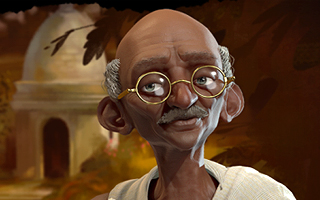
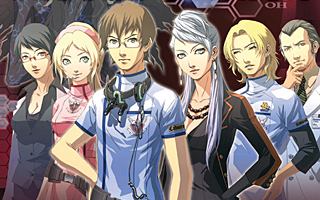
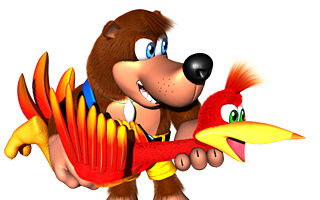
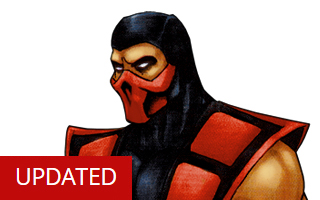
Do you agree with this list? Let us know what you think by leaving a comment below. Your opinion matters!